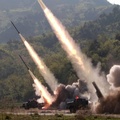Essay Introduction
The United States (U.S.) Intelligence Community (I.C.) is celebrated for a wide range of accomplishments and successes. It has also been defamed by numerous failures and unmet challenges. Two scenarios highlight these challenges. Their final outcomes and/or positioning at the epicenter of critical events that contributed to the evolution of the current U.S. National Security Strategy are part of the historical record, which gives narration to hard-sought and hard-fought lessons in the evolution of adaptive counterintelligence.
Research Paper on Pearl Harbor
Between 1937 and 1941, conflicts between China and Japan continued to grow, impacting U.S. relationships with both nations and “ultimately contributing to pushing the United States toward war with Japan and Germany” (U.S. Department of State, n.d.). The full-scale conflict between the U.S. and Japan had loomed on the horizon for so long that each nation, as early as the 1920s, had developed plans for large-scale combat; however, tensions did not begin to escalate until Japan invaded Manchuria in 1931. The following ten years found Japan maintaining its expansionist thrust into China, leading to a major conflict between the two nations in 1937. Japan spent considerable effort and resources to isolate China and attain a sustainable flow of resources leading to victory on the mainland; the ‘Southern Operation’ was orchestrated to enable these efforts (Barnhart, 1987).
Argumentative Essay Examples on Pearl Harbor
Early in 1941, President Franklin D. Roosevelt re-positioned the U.S. Pacific Fleet to Pearl Harbor from its previous location in San Diego, CA, and ordered an enhanced forward presence in the Philippines to discourage and turn back Japan’s escalation of force. Japanese senior military leadership incorrectly presumed any attack on the United Kingdom’s Southeast Asian Colonies would draw the U.S. into war, and a crippling preemptive attack seemed the only feasible course of action in order to avoid U.S. Navy involvement. Japanese war planners also considered invading the Philippines as necessary.
Thesis Statement for Pearl Harbor
On the U.S. side, War Plan Orange, a series of Joint U.S. Army and Navy war plans for dealing with war in Japan in the years following the First World War, envisioned a 40,000-man elite force to safeguard the Philippines. General Douglas MacArthur opposed this plan and felt a force of at least 4000,000 would be necessary. U.S. planners forecasted that the Philippines would be vacated at the outbreak of war, and those same orders were passed down to Admiral Thomas Hart, commander of the Asiatic Fleet, by late 1941 (Barnhart, 1987).
This Philippine focus, coupled with a series of other events, ultimately led to the attack on Pearl Harbor, a major catalyst for World War II. The attack operation on Pearl Harbor was led by the Imperial Japanese Navy Air Service against the U.S. Naval Base at Pearl Harbor, Hawaii, on December 7, 1941, at 07:48 am. Imperial Japanese Military Leadership referred to the attack under different code names (e.g., Hawaii Operation, Operation A.I., and Operation Z, etc.) during its planning (French, 1999), a testament to prevailing counterintelligence practices of the era (Weiner, 2002).
Pearl Harbor: Counterintelligence Challenges
The attack on Pearl Harbor is still considered one of the biggest intelligence failures in the U.S. Intelligence Community’s history, attributable to complicated counterintelligence challenges at the time, especially from a National Security standpoint. The U.S. military failed to bolster force protection measures associated with the U.S. Pacific Fleet, although it had intercepted/deciphered the Japanese Diplomatic Code, providing an intelligence picture so comprehensive it was deemed unprecedented by the military leadership of this time period (and with a week’s worth of lead time). One of the major factors in this catastrophic counterintelligence failure was the predominant intelligence-sharing practices of this era, a time when information was divided, hoarded, blocked, and or scattered (Friedman, 2012).
Cold War Era
Ideas for Tet Offensive Research
The Tet Offensive, officially titled The General Offensive and Uprising of Tet Mau Than 1968 by North Vietnam and the National Liberation Front, was a major military offensive of the Vietnam War. The military campaign began on January 30, 1968, and included highly-coordinated attacks by forces of the Viet Cong and North Vietnamese People’s Army of Vietnam against the forces of the South Vietnamese Army of the Republic of Vietnam, the U.S. Armed Forces, and their allies (History.com, 2009). The campaign was a coordinated series of North Vietnamese attacks on more than 100 cities and military bases in South Vietnam to promote rebellion among the South Vietnamese population and discourage the U.S. Government’s commitment to the Vietnam War (Nguyen, 2018).
The Tet Offensive is still considered a decisive event in the Vietnam War – “a military loss for North Vietnam but a political victory, as the shock of the attack began to turn American public opinion against the conflict” (Nguyen, 2018). In full breach of a holiday truce allowing both sides to celebrate Tet, thousands of soldiers and Vietcong guerrillas were ordered into cities all over South Vietnam, including Saigon, home of the U.S. Embassy. The North’s strategy was coordinated ambushes of the Army of the Republic of Vietnam and its U.S. allies to inspire a general uprising that would overthrow the government of the South.
Although U.S. and South Vietnamese forces managed to fend off the attacks, media coverage of the massive offensive shocked the American citizenry, resulting in lessening public support for the war effort. The Tet Offensive is recognized as the decisive event in the history of the Vietnam War – a military loss for North Vietnam but a political victory, as the shock of the attack began to turn American public opinion against the conflict. Despite heavy casualties (estimated to be in the tens of thousands), North Vietnam secured a strategic and moral victory with the Tet Offensive, as the attacks marked the beginning of the lengthy, painful American withdrawal from the area (History.com, 2009).
Tet Offensive: Counterintelligence Challenges
Congressional inquiries shortly after the Tet Offensive concluded that U.S. and South Vietnamese military officers, as well as intelligence analysts, failed to fully anticipate the “intensity, coordination, and timing of the enemy attack” (Nguyen, 2018) despite multiple warnings. Navy librarian Glenn E. Helm notes that disregard for intelligence collection, language barriers, and a misunderstanding of enemy strategy played particularly prominent roles in the intelligence debacle (Friedman, 2012). Still, “Americans almost succeeded in anticipating their opponents’ moves in time to avoid the military consequences of surprise” (Wirtz, 1991).
Compare and Contrast
Throughout history, intelligence and counterintelligence organizations have been created during crises and disbanded during peacetime. While the Attack on Pearl Harbor and the Tet Offensive are vastly different, both incidents forced policymakers to look at counterintelligence not just from a tactical or espionage perspective but from a National Security perspective. Following the attack on Pearl Harbor and with the onset of World War II, the need for a full-time intelligence and counterintelligence organization was identified and brought to fruition finally by the U.S. Congress in the passing of the National Security Act of 1947. However, the ever-changing environment, including new threats to every war-fighting domain, will force the U.S. Defense Strategy to continue to evolve. The U.S. Government’s approach to counterintelligence will be at the forefront of those efforts.
Conclusion
Efforts will inevitably be geared towards not only “deepening understanding of foreign intelligence entities’ plans, intentions, capabilities, tradecraft, and operations targeting U.S. national interests and sensitive information and assets” but a means to disrupt them, as stated in the first and second mission objectives in the National CI Strategy (Hess, 2018).


